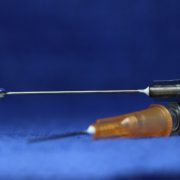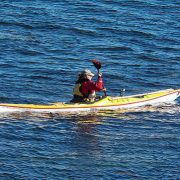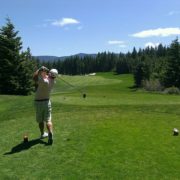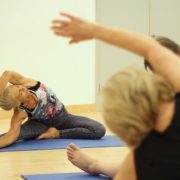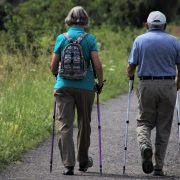4 Tips to Avoid Neck and Back Pain When Traveling
4 Tips to Avoid Neck and Back Pain When Traveling
Memorial Day weekend is the “unofficial” start of summer – and AAA estimates that 39.2 million people will travel this weekend. That’s 8.3% more than last year, and it’s going to mean the exacerbation of neck and back pain for a lot of folks out there – especially the over 40 crowd.
So why does traveling wreak such havoc on our spines?
Road trips, planes and trains typically involve lots of sitting and driving, which necks and backs just don’t like when done frequently and for prolonged periods. You’re typically off your routine when you travel, and sleep on surfaces you’re not accustomed to. Any one of these things – but especially when combined together – can flare up old patterns of neck and back pain.
The good news is there are lots of things you can do when traveling to ease neck and back pain. Here are 4 of my top tips:
1. Use the 30 Min. Rule
The biggest strain on your body while traveling is undoubtedly the prolonged periods of sitting – often in cramped spaces. Our bodies are made to move continuously throughout the day. Whenever possible, getting out of your seat often is critical for keeping your neck and back healthy and mobile. Motion is lotion. And one of the best things you can do for your neck and back is to interrupt any prolonged posture – especially sitting – once every 30 min. If you’re unable to actually stand for a few seconds, then try arching your back or stretching your arms up over your head while sitting. Do a few neck rolls and chin tucks to stretch your spine. The more you move, the better your spine is going to feel.
2. Use a Lumbar Roll
Our spine is made up of distinct curves for a very good reason. They are designed to balance forces and sustain shock – and it’s best if you can maintain them. When you sit, the curve in your lower back (lumbar spine) decreases, or sometimes disappears all together, when not supported. While it’s perfectly acceptable to sit like this for small increments of time, it will start to cause problems after several hours. Prolonged curvature of your low back puts unwanted stress on the discs, ligaments, and muscles in your spine.
Your neck also responds to this posture by assuming a position we call “forward head”. This can give you headaches, neck pain, and cause extra tension to occur in your mid back and upper shoulders. One of the best things you can do is use a cylindrical lumbar roll to help maintain the natural curve in your low back. If you’re driving, the lumbar support in your seat usually isn’t enough. Take a small towel roll, sweatshirt, or pillow and place it at the small of your back any time you’re sitting. You’ll find it’s easier to maintain the natural curves in your spine – and you’ll have a lot less strain on your neck and back.
3. Bring your own pillow
Sleeping on surfaces we’re not accustomed to can not only ruin a vacation but set us up for unwanted neck and back pain. If possible – bring your favorite pillow from home – or ask for extra pillows wherever you’re staying. If a mattress is too firm for you – you can use pillows to cushion areas of your body like hips and shoulders so that you don’t wake up sore. Conversely, if a mattress is too soft, you can use extra pillows to build up the surface under your waist if you’re a side sleeper, under the small of your back if you’re a back sleeper, and under your belly if you’re a stomach sleeper.
Lastly, if a pillow is too fluffy or too flat – your neck will end up paying for it. When you’re sleeping – the goal is to position yourself in a way that allows your spine to stay in neutral alignment. You don’t want your head tilted down or up – it’s the fastest way to stir up an old neck injury or wake up with a tension headache.
4. Extend instead of bend
Did you know that the average person bends or flexes forward between three and five thousand times per day? When you’re traveling – you’re going to be on the upper end of that metric. Our spines crave balance. And because of the disproportionate amount of time we spend bent over – we need to make a concerted effort to move our spines in the opposite direction. When you’re traveling – look for opportunities to be upright and mobile.
Walking is an excellent, therapeutic activity for your spine – plus – it’s a great way to see the sights wherever you’re going. When you’re practicing the 30 min rule, give your back and neck a nice stretch backwards each time you stand to interrupt your sitting. But probably more important than what you do during travel is what you do when you’re back home. Be cautious when jumping back into your typical gym or exercise routine. All the sitting and bending that comes with travel makes your spine vulnerable for injury. It’s very common to get injured a week or two after you’re home – seemingly “out of nowhere”.
Looking for more help with your neck and back pain?
Sign up for a FREE Discovery Session today to speak with my client success team to see if we can help you get rid of your neck and back pain for good.
Carrie Jose, Physical Therapist and Pilates expert, owns CJ Physical Therapy & Pilates in Portsmouth, NH. To get a free copy of her guide to taking care of back pain – click here.


